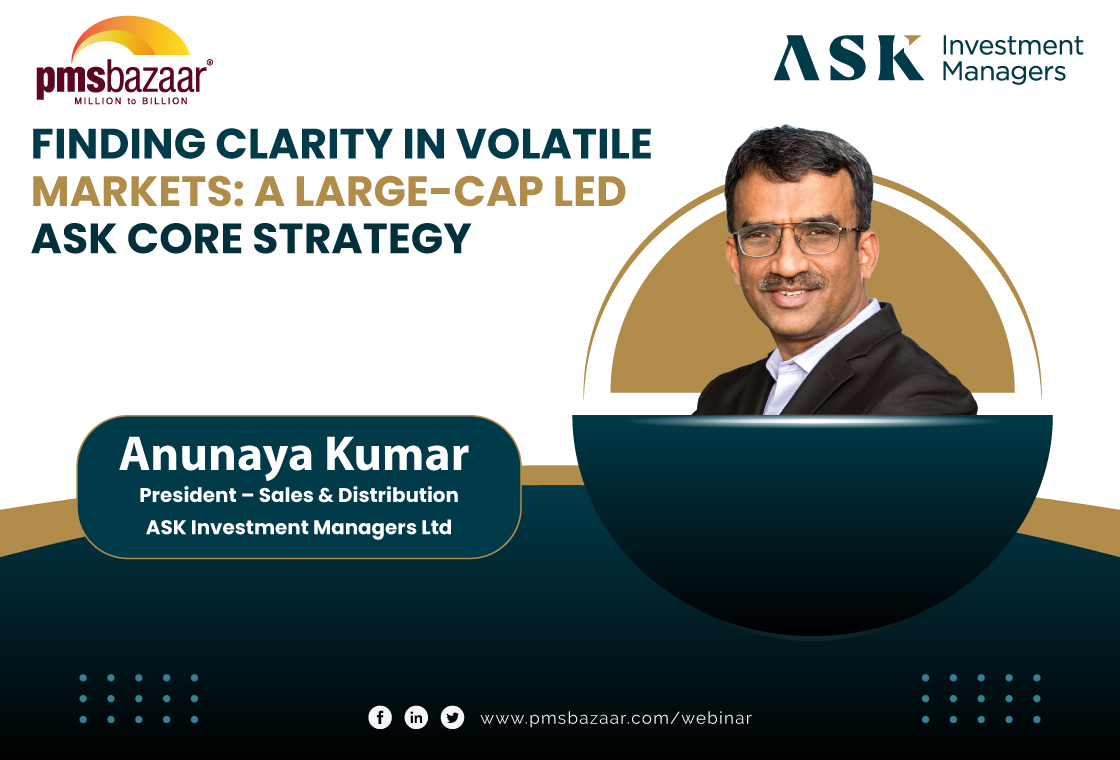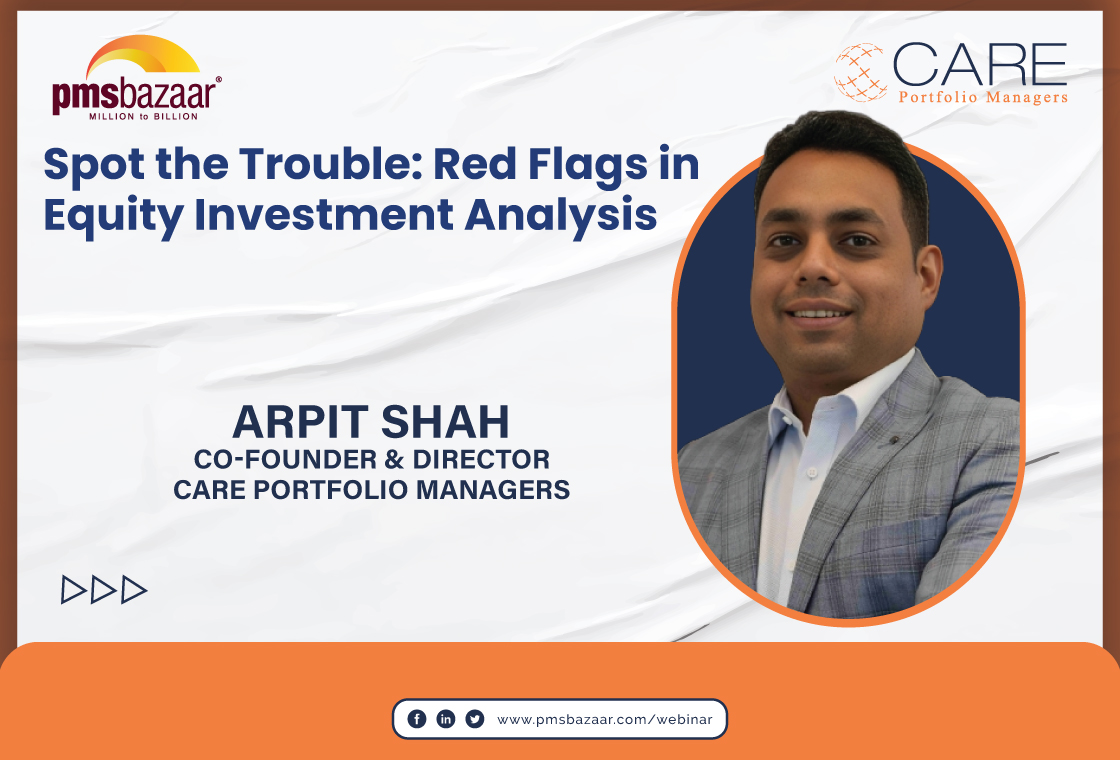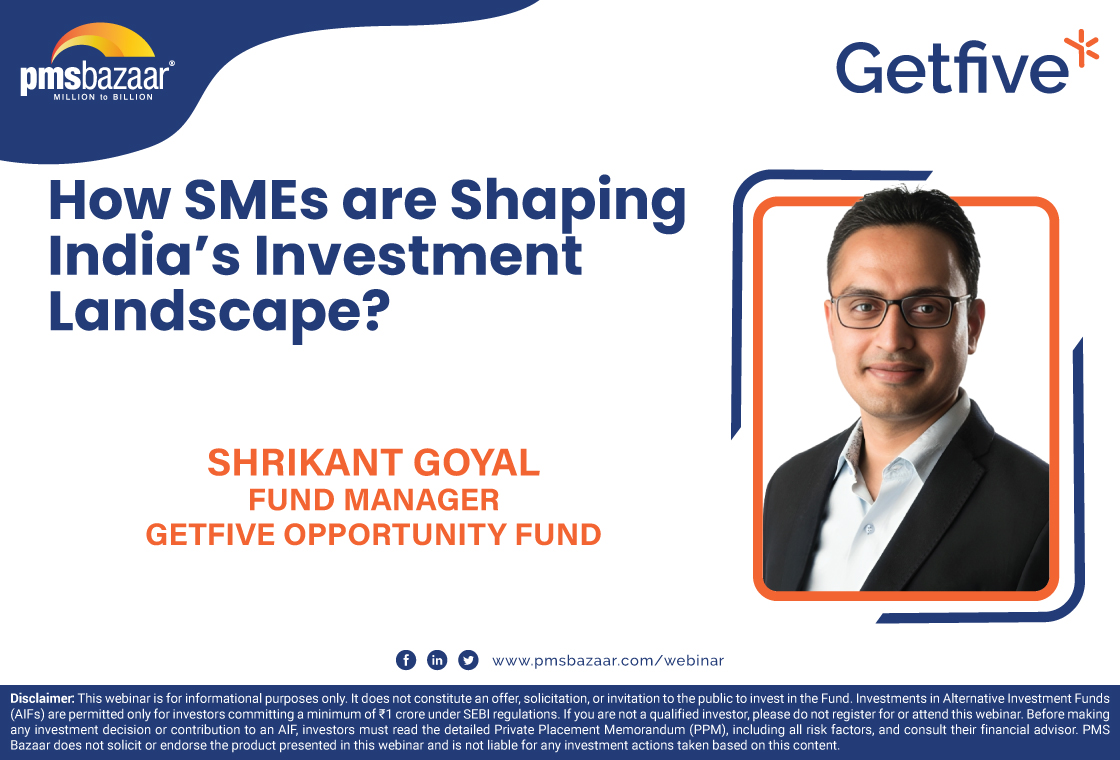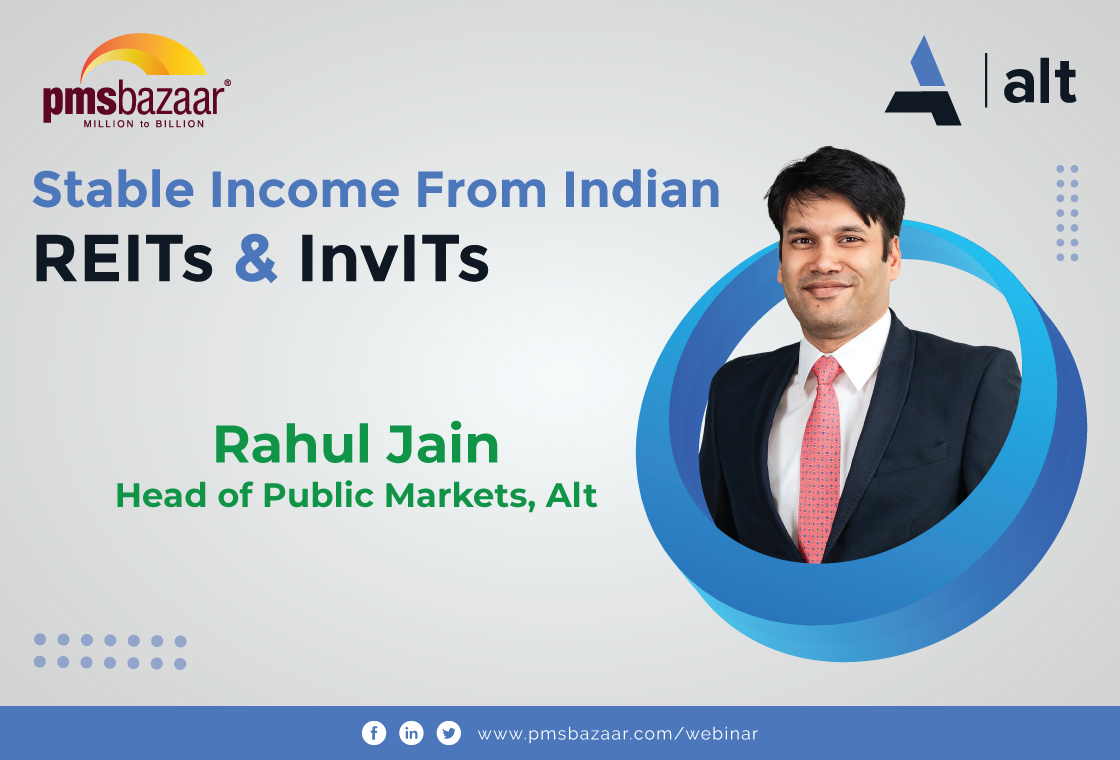PMS Bazaar hosted a webinar titled ‘Unveiling Pre-IPO Mid-Market's J Curve Opportunity,’ featuring Nishad Khanolkar, Fund Manager at Pantomath AMC. The webinar delved into various investment strategies and pre-IPO (Initial Public Offering) investment in the mid-market space.

Key pointers covered in the webinar are:
- Tailored approach to untapped potential
- Rigorous selection process for quality investments
- Maximising returns through a multifaceted strategy
- Mitigating risk for investor confidence
- Competitive advantage for risk-adjusted returns
Nishad Khanolkar broadly discussed the Category II close-ended AIF (alternative investment fund) of Pantomath AMC - India Inflection Opportunity Trust Scheme: Bharat Value Fund (BVF). He discussed finding safe and profitable unlisted investment opportunities, including rigorous selection criteria to ensure sound investments and using artificial intelligence (AI) for analysis to make better investment decisions. He also briefed on how Pantomath differentiates itself from other investment firms, Pantomath Group's ventures in AI and their approach to ethical investing, and the importance of regulatory compliance for building investor confidence. The webinar offered valuable insights for those interested in pre-IPO investing.
Tailored approach to untapped potential
Khanolkar started his presentation with the reasons why this AIF appeals to investors. Unlike traditional funds investing in established publicly traded companies, the funds he manages, carve a niche by specialising in unlisted companies. These companies often possess immense growth potential but lack the visibility and liquidity associated with listed entities. By meticulously selecting high-performing unlisted companies with a strategic IPO (initial public offer) roadmap, Khanolkar explained that the BVF unlocks this untapped potential for investors, offering the opportunity to capitalise on significant returns upon the company's public debut.
Rigorous selection process for quality investments
Khanolkar shared how the BVF meticulously vets potential investments to ensure they meet stringent criteria. He said that as part of his strategy, he prioritises companies with a strong financial foundation, demanding a minimum revenue of Rs 200 crore and PAT (profit after tax) positive. A critical factor is promoter holding, signifying the founders' long-term commitment to the company's success. BVF ensures a minimum promoter stake of 90%, an indication of a strong alignment of interests with investors. Furthermore, Khanolkar emphasised that to safeguard against potential downturns, the company's gross block, representing its value of total assets, must be at least 2.5 times the invested amount, providing a financial buffer.
Maximising returns through a multifaceted strategy
According to Khanolkar, the fund goes beyond passive investment, employing a two-pronged approach to maximise returns. Firstly, it actively supports portfolio companies by providing strategic guidance and operational expertise to bolster their profitability (PAT) before the IPO. This pre-IPO nurturing period strengthens the company's financial performance and attractiveness to potential public market investors. Secondly, as part of his strategy, he negotiates for a high P/E ratio (price-to-earnings ratio) at the IPO stage. A strong P/E ratio translates to a premium valuation for the company, generating substantial gains for the investors upon exiting the investment.
Mitigating risk for investor confidence
Recognising the inherent risks associated with unlisted companies, Khanolkar explained prioritising robust risk mitigation strategies. To ensure a smooth and successful IPO process, he negotiates the right to appoint the merchant banker, a crucial intermediary responsible for managing the IPO. An additional layer of security comes in the form of a buyback agreement. If the IPO fails to materialise within the designated timeframe, the promoter is obligated to repurchase the shares at the initial investment amount, protecting investors from potential losses. Furthermore, the fund adheres to strict ethical guidelines, excluding companies operating in sensitive sectors like tobacco, alcohol, or gambling.
Active ownership for collaborative growth
According to Khanolkar, the investments go beyond mere financial investment, he believes in adopting an active ownership philosophy. This strategy fosters close collaboration with portfolio companies, providing strategic guidance and operational expertise to accelerate their IPO readiness. Ideally, BVF aspires to be the first institutional investor, allowing them to shape the company's growth trajectory from the ground up and leverage their experience to optimise the IPO outcome. Moreover, the fund restricts the number of investors in its portfolio companies. This streamlined structure facilitates efficient decision-making and ensures a more unified approach to maximising the company's value for a successful IPO.
Competitive advantage for risk-adjusted returns
The BVF caters to investors seeking superior returns through a well-defined IPO exit strategy. It could be an alternative to traditional investment options by focusing on high-growth, unlisted companies with the potential for exponential valuation upon going public. That is, Pantomath’s exit is the entry point for other institutional investors such as mutual funds. The emphasis on robust risk mitigation measures, control over entry and exit points through strategic selection and IPO negotiation, and a lock-in period of 5 years can make this a potentially lucrative option for investors seeking risk-adjusted returns.
The webinar offered even more valuable insights. Watch the video for a full recap:
Get access to rich data and analytics of PMS & AIF by subscribing to us. Join the 60000+ investors & experts now: Subscribe NOW
Disclaimer: This Blog is made for informational purposes only and does not constitute an offer, solicitation, or an invitation to the public in general to invest in any of the Funds mentioned. All the Returns mentioned in this blog are provided by the respective asset management company and may vary based on their reporting structure (Pre-tax, Post-tax, Post-expenses, etc.). However, PMS Bazaar doesn’t guarantee the accuracy, adequacy, or completeness of any information. Investors must read the detailed documents, including the risk factors, and consult your Financial Advisor before making any investment decision/contribution to AIF. This Blog has been prepared for general guidance, and no person should act upon any information contained in the document. PMS Bazaar, its affiliates, and their office, directors, and employees shall not be responsible or liable for any investment action initiated. This Blog is intended only for the personal use to which it is addressed and not for distribution.
Recent Blogs

MICRO CAPS: The Dark Horses of the Indian Equity Market
PMS Bazaar recently organized a webinar titled “MICRO CAPS: The Dark Horses of the Indian Equity Market,” which featured Mr. Rishi Agarwal and Mr. Adheesh Kabra, both Co-Founders and Fund Managers, Aarth AIF. This blog covers the important points shared in this insightful webinar.

Finding Clarity in Volatile Markets: A Large-Cap Led ASK CORE Strategy
PMS Bazaar recently organized a webinar titled “Finding Clarity in Volatile Markets: A Large-Cap Led ASK CORE Strategy,” which featured Mr.Anunaya Kumar, President – Sales and Distribution ASK Investment Managers Limited. This blog covers the important points shared in this insightful webinar.
.jpg)
Passively Active Investing — A Modern Investor’s Lens on ETF-Based PMS
PMS Bazaar recently organized a webinar titled “Passively Active Investing — A Modern Investor’s Lens on ETF-Based PMS,” which featured Mr. Karan Bhatia, Co-Founder and Co-Fund Manager , Pricebridge Honeycomb ETF PMs. This blog covers the important points shared in this insightful webinar.

Spot the Trouble: Red Flags in Equity Investment Analysis
PMS Bazaar recently organized a webinar titled “Spot the Trouble: Red Flags in Equity Investment Analysis,” which featured Mr. Arpit Shah, Co-Founder & Director, Care Portfolio Managers. This blog covers the important points shared in this insightful webinar.

Long-Only AIFs Rebound Sharply in October; Long-Short Strategies Lag Despite Lower Volatility
106 long-only AIFs averaged 3.68% vs 32 long-short AIFs at 2.7%; only 24–31% of funds beat key indices

Markets log strongest monthly gains in 7 months; PMS performance turns near-uniform in October
Nifty 50 TRI gained 4.62%, BSE 500 TRI rose 4.27%; 415 of 427 equity PMSes ended positive

How SMEs are Shaping India’s Investment Landscape?
PMS Bazaar recently organized a webinar titled “How SMEs are Shaping India’s Investment Landscape?” which featured Mr. Shrikant Goyal, Fund Manager, GetFive Opportunity Fund.

Stable Income from Indian REITs and InvITs
PMS Bazaar recently organized a webinar titled “Stable Income from Indian REITs and InvITs,” which featured Mr. Rahul Jain, Head of Public Markets, Alt.

